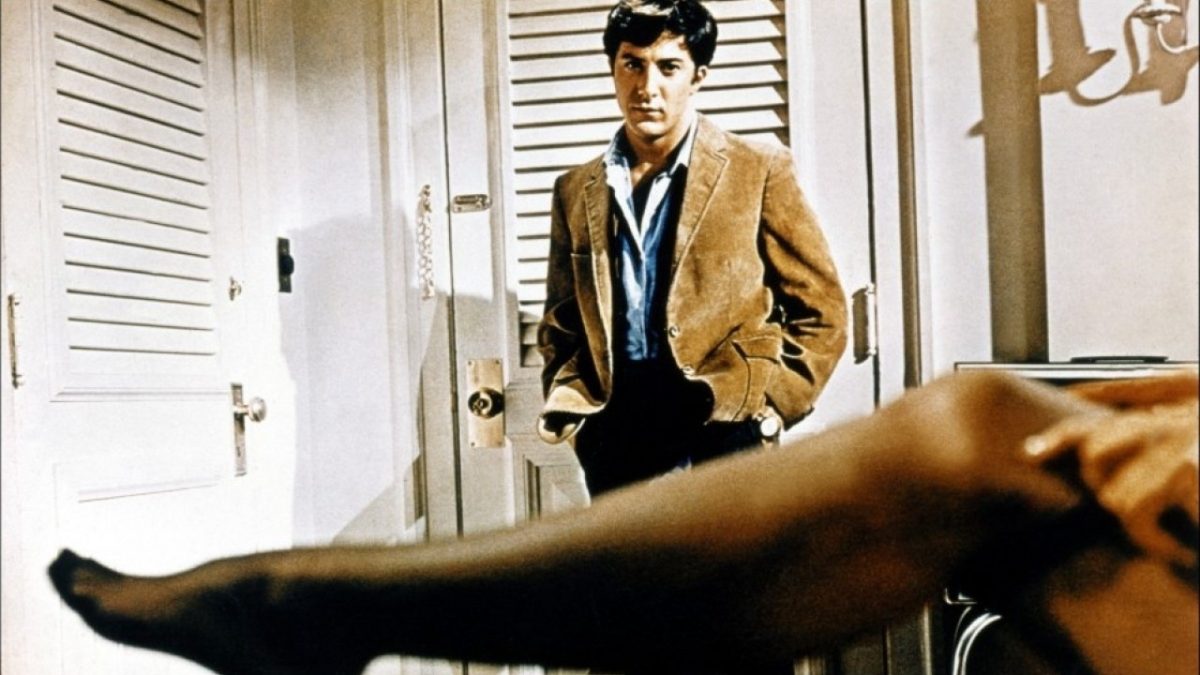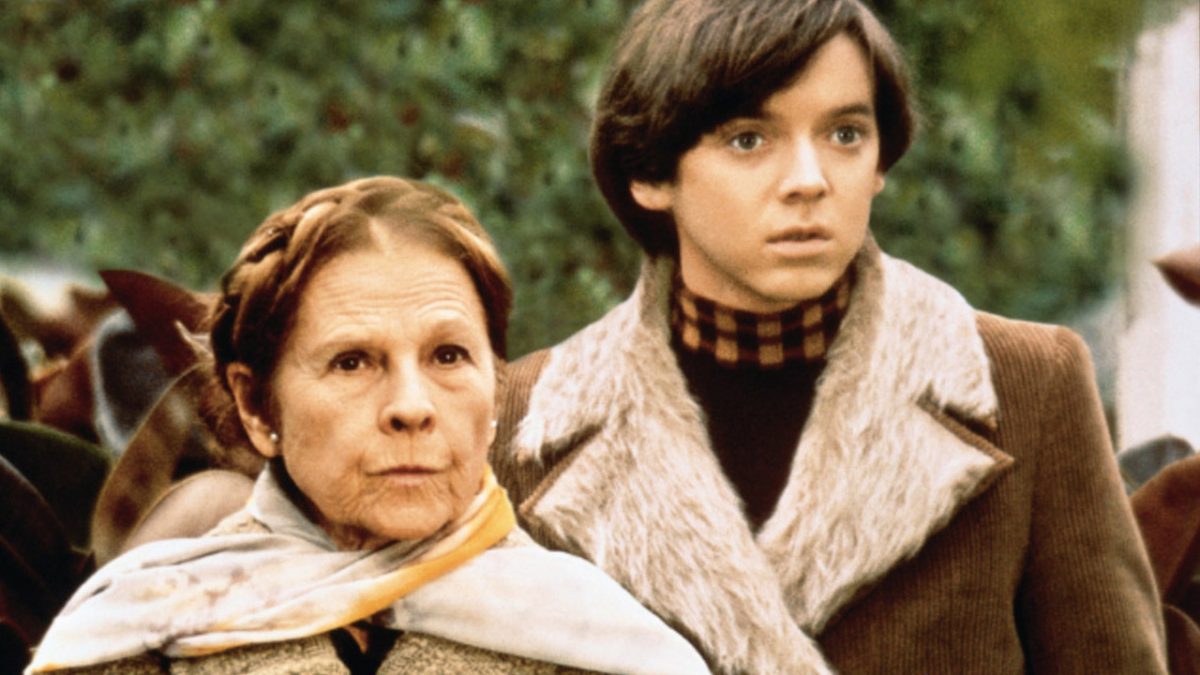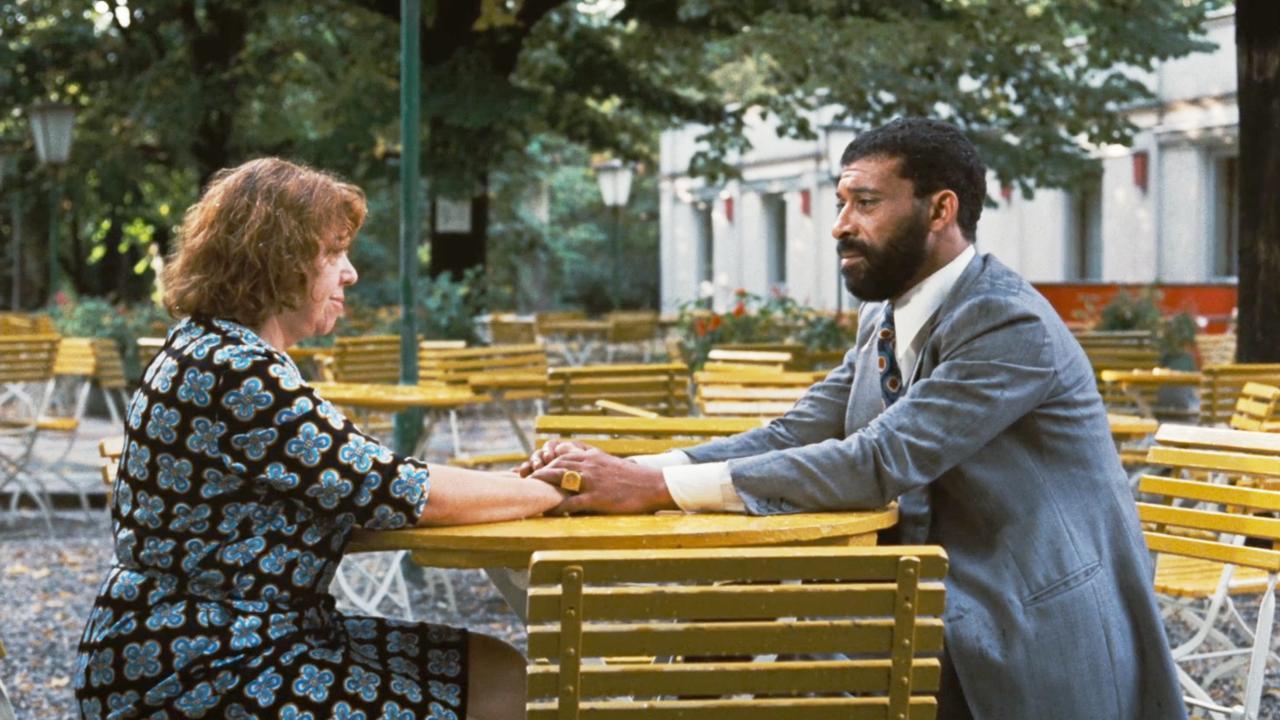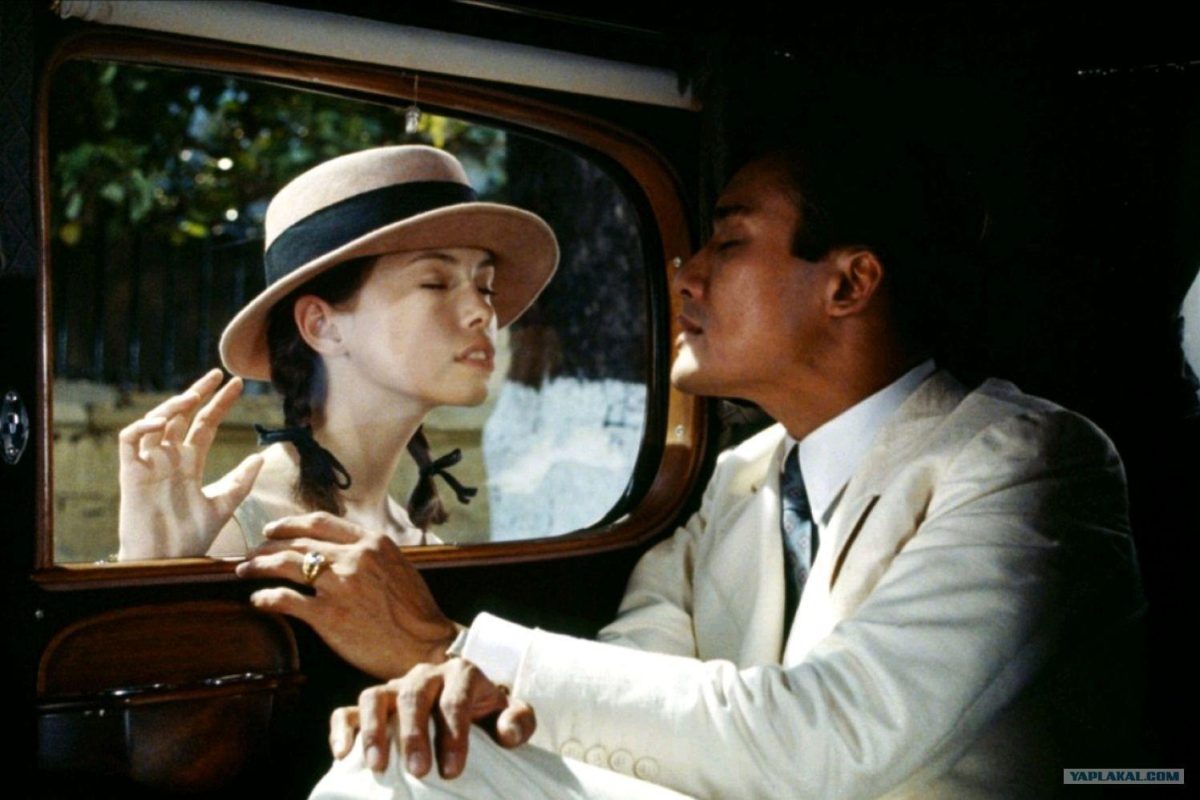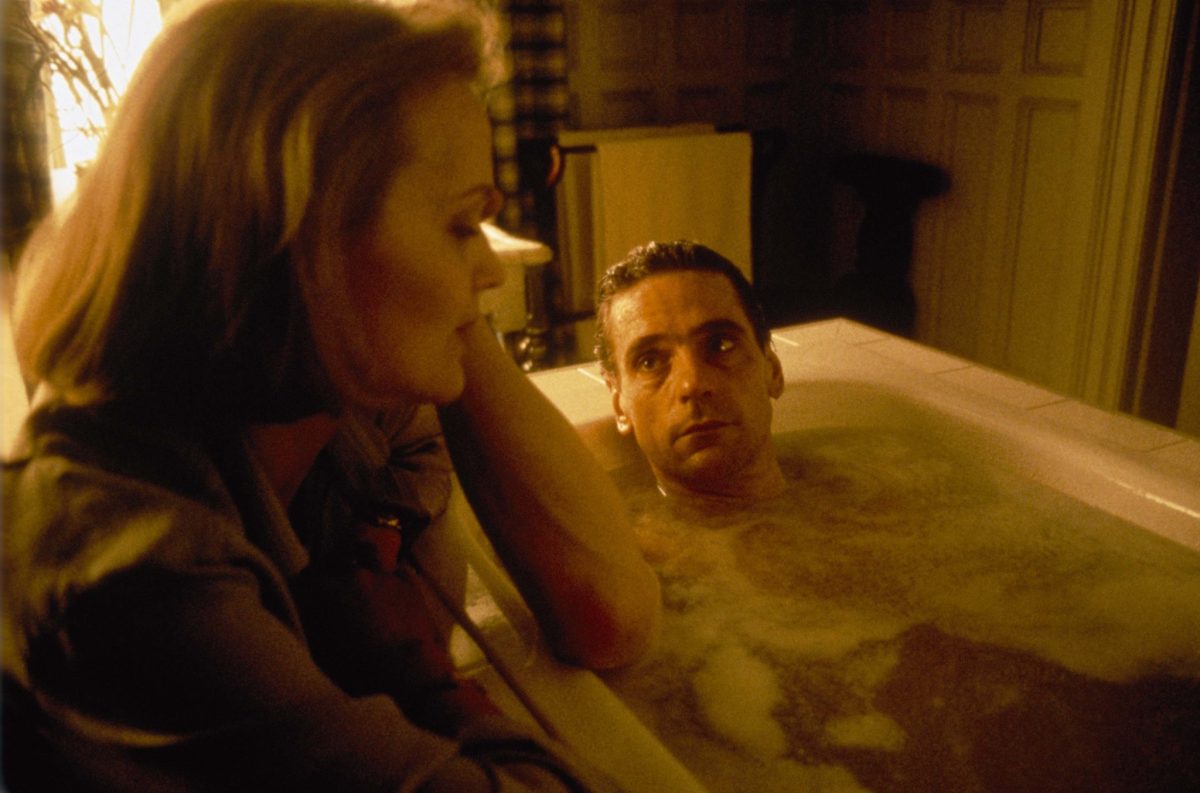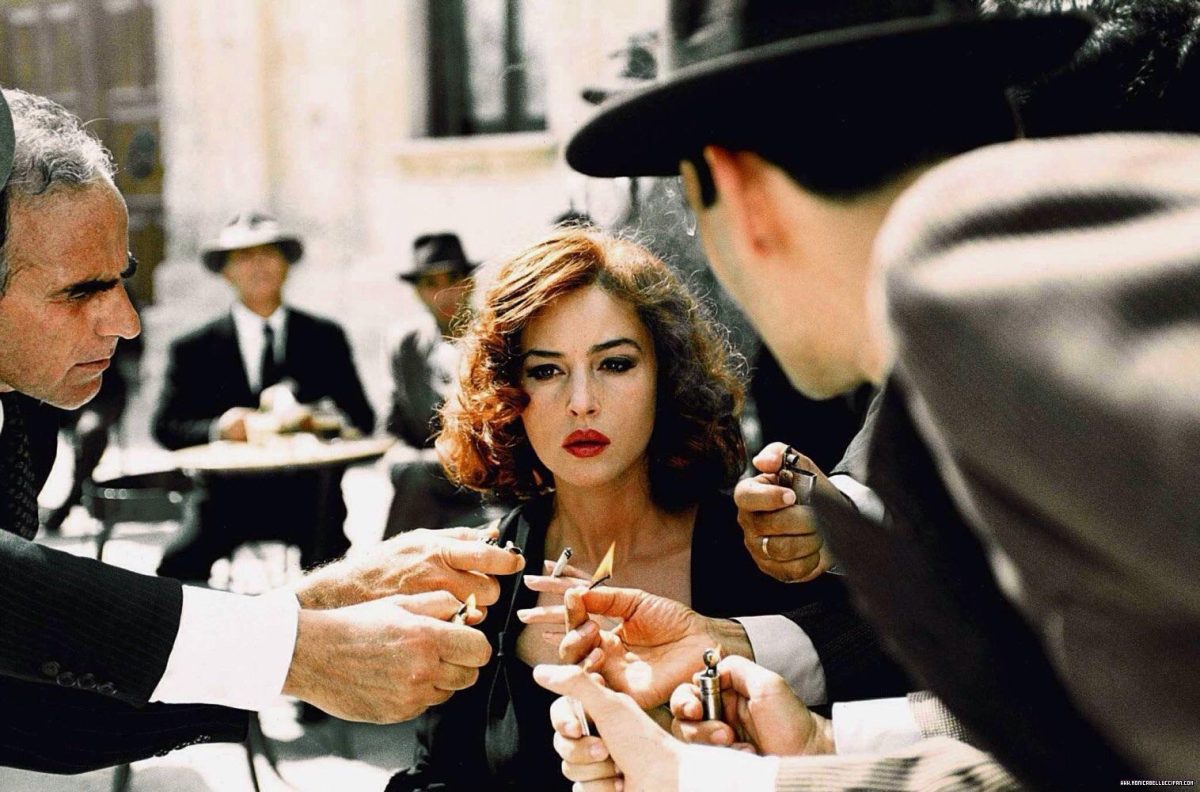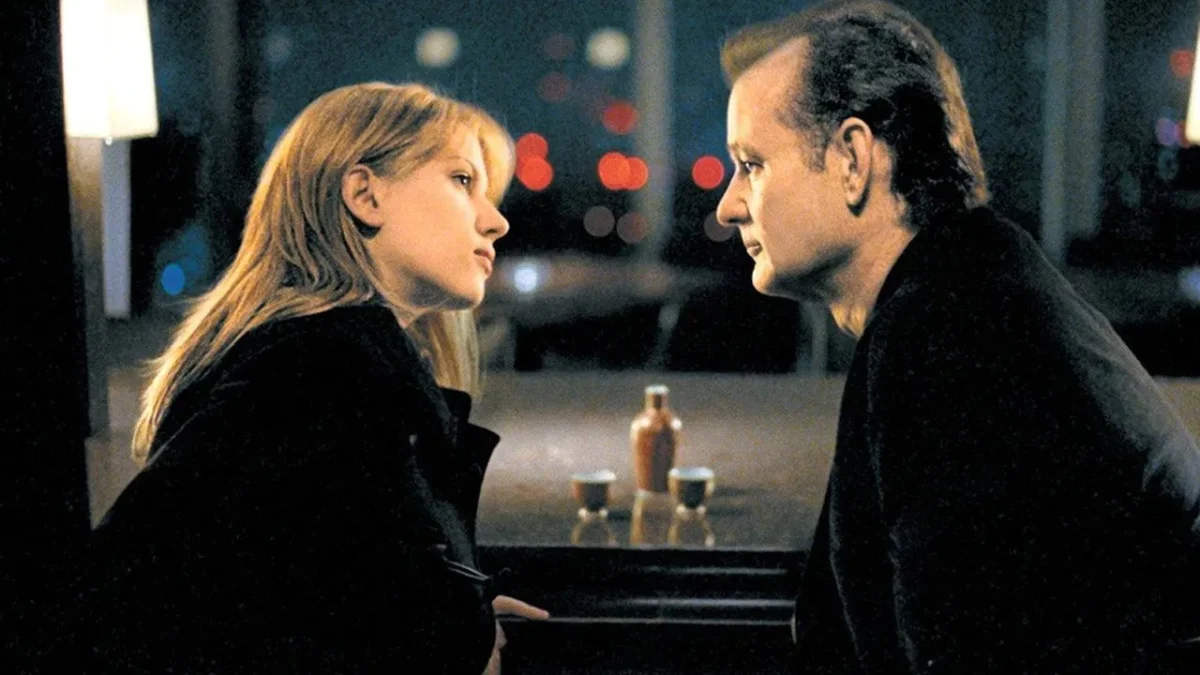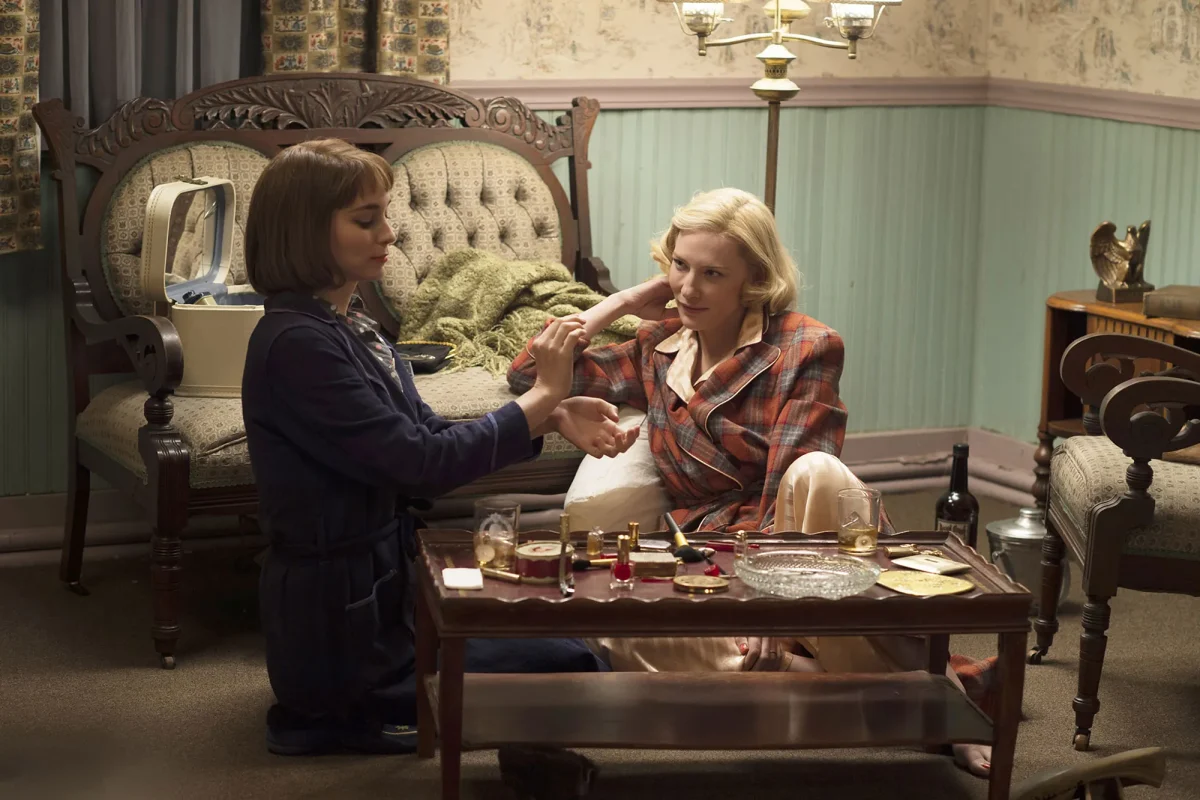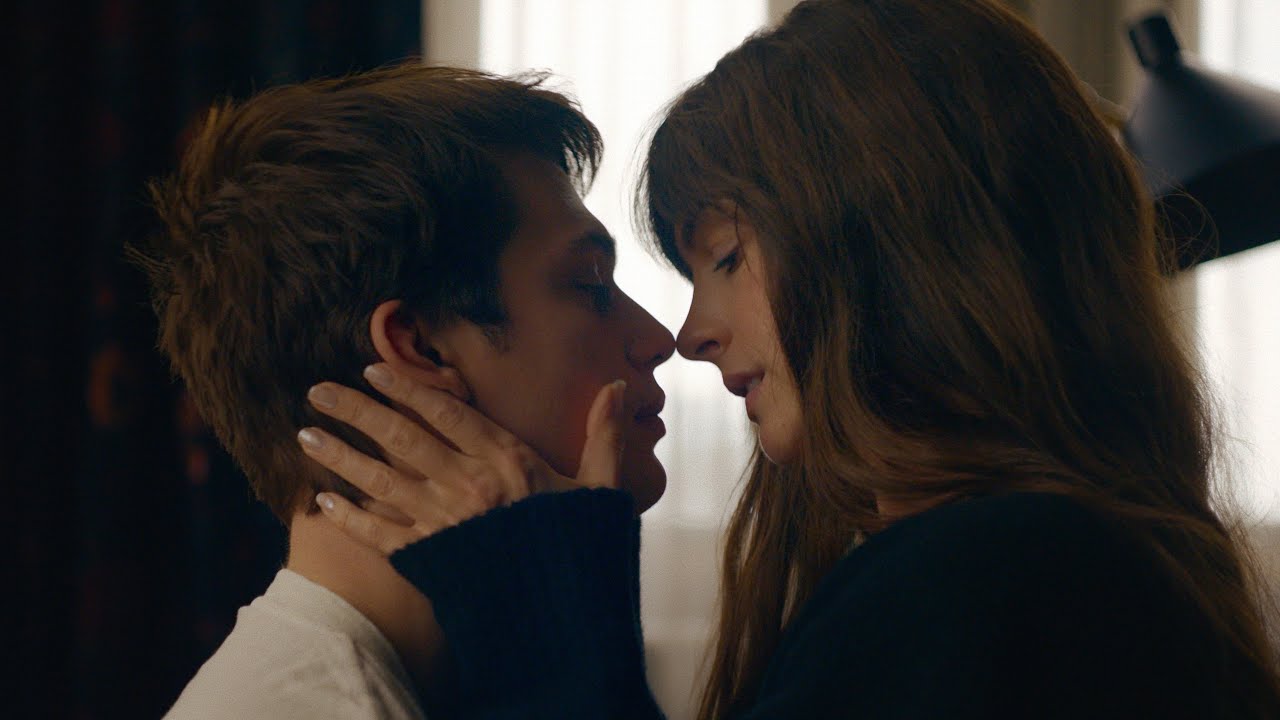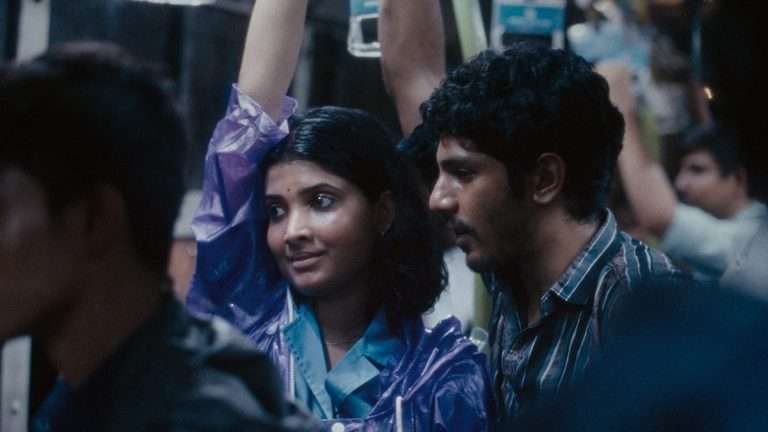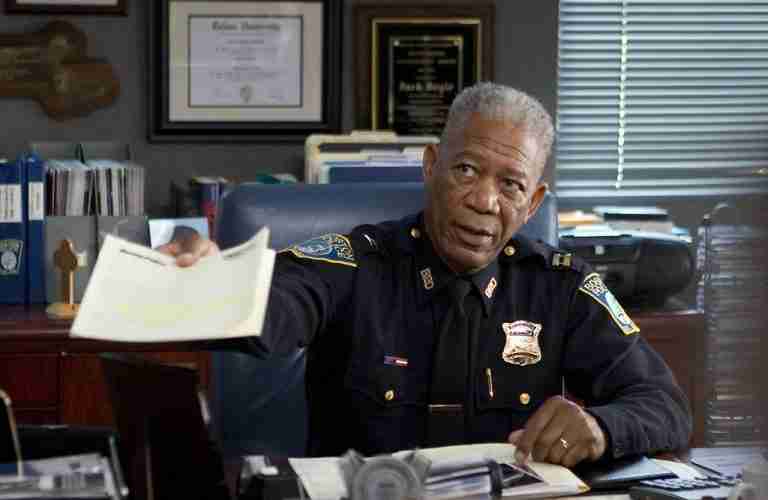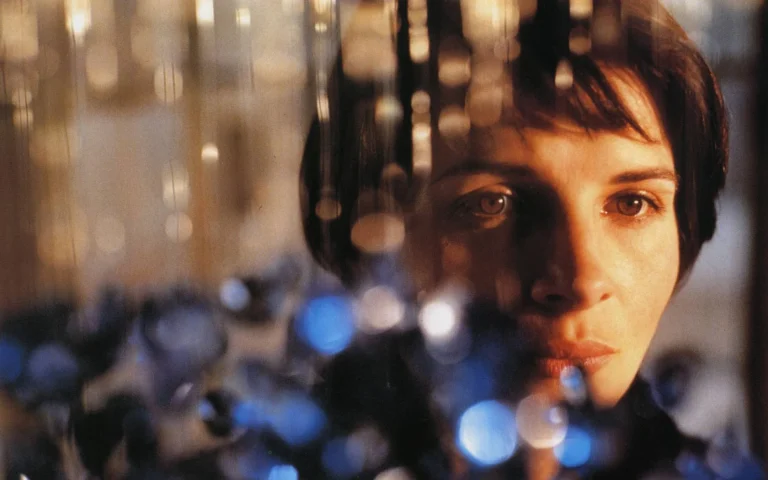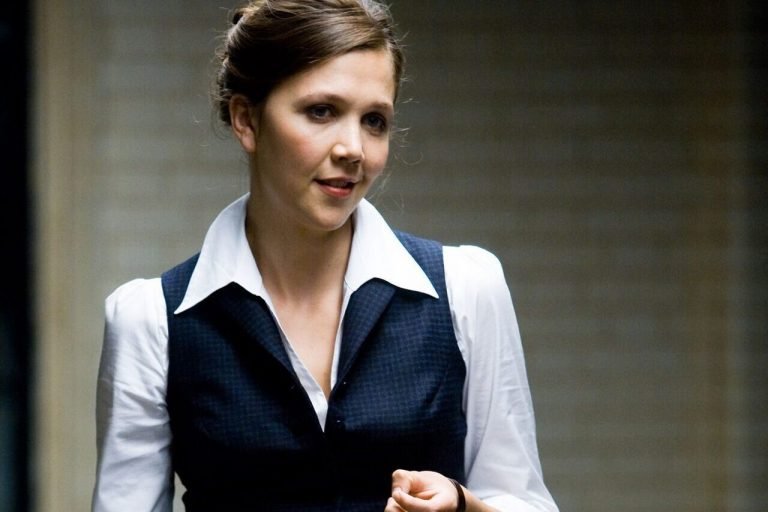Far from idealized portrayals of love as pure or effortless, many of the most enduring romantic narratives explore the asymmetries that define human connection: differences in class, culture, gender roles, and age. These disparities complicate the romantic ideal, rendering love not merely as a feeling, but as a process, one that must contend with the realities of embodied experience and social expectation.
The age-gap romance, as a recurring trope in cinematic storytelling, occupies a complex space between transgressive desire and cultural fascination. One of the most provocative forms of such romantic entanglement is the “May–December” romance, a term used to describe relationships marked by a significant age difference between partners.
These stories have long fascinated audiences, in part because they foreground love’s capacity to defy convention while simultaneously raising questions about power, agency, and the social norms that govern desire. The term itself alludes to the contrasting seasons of May (representing spring and youth) and December (representing winter and old age), and it dramatizes the interplay between youth and maturity, innocence and experience, longing and loss.
From early Hollywood classics to contemporary international cinema, films exploring romantic or sexual relationships between significantly older and younger individuals have both mirrored and shaped evolving social attitudes toward age, power, gender, and intimacy. In the golden age of cinema, such narratives were often cloaked in the glamour of patriarchal fantasy, think “Sabrina” (1954) or “Lolita” (1962), where older male protagonists were positioned as worldly and desirable, while younger women functioned as embodiments of innocence or awakening.
As feminist critique, queer theory, and discourses on consent gained traction in the late 20th century, the genre began to reflect more nuanced, sometimes self-reflexive explorations of intergenerational desire. Films like “Harold and Maude” (1971) or “Call Me by Your Name” (2017) challenged heteronormative and moralistic expectations, reimagining the age-gap romance as a space for emotional vulnerability, coming-of-age, and the negotiation of power. At the same time, critiques of grooming, manipulation, and the fetishization of youth have foregrounded the ethical tensions inherent in these narratives.
From Billy Wilder to Paul Thomas Anderson, some of cinema’s greatest auteurs have long been drawn to the messy, layered complexities of love. This list curates ten of the most compelling age-gap romance films across cultures and decades, works that do not merely dramatize age difference, but interrogate its affective, psychological, and sociopolitical dimensions.
Ranging from controversial classics to tender modern dramas, these films invite us to ask: When does desire cross the line into domination? Can love transcend age without erasing inequality? And how do our cinematic fantasies reflect deeper truths about the way we live, love, and remember?
1. The Graduate (1967)
Mike Nichols’s “The Graduate” remains a landmark in American cinema, a satirical coming-of-age story that captures the disillusionment of a post-war generation while subverting romantic and sexual norms through its infamous age-gap affair. Benjamin Braddock (Dustin Hoffman), a recent college graduate adrift in upper-middle-class ennui, is seduced by Mrs. Robinson (Anne Bancroft), an older, married family friend. Their relationship begins as a cynical sexual arrangement, rooted more in rebellion and malaise than passion, but gradually morphs into something far more psychologically complex and culturally unsettling.
“The Graduate” uses the age-gap dynamic not for erotic fantasy but as a symbolic confrontation with the hypocrisy of the adult world. Mrs. Robinson is at once alluring and tragic: a figure of sexual agency and disillusionment, shaped by a life of compromises and confinement. The film’s subversive tension arises not merely from their difference in age, but from Benjamin’s naive attempt to find authenticity in a world that offers only scripts -marriage, career, respectability – that feel increasingly hollow.
The film’s visual language, its use of empty swimming pools, mirrors, and Simon & Garfunkel’s melancholic soundtrack, heightens its themes of alienation and existential drift. “The Graduate” doesn’t romanticize the affair; instead, it exposes its emotional cost and its failure to provide clarity. Even the iconic final scene, often misread as triumphant, ends in stunned silence as the couple stares into an uncertain future.
While the age-gap romance is central to the film’s narrative, “The Graduate” uses it to explore broader anxieties about generational identity, sexual autonomy, and the discontents of middle-class conformity. In doing so, it redefined not only the coming-of-age genre but also the cultural portrayal of desire between unequals, making it one of the most enduring and ambivalent age-gap romances in cinema history.
2. Harold and Maude (1971)
Hal Ashby’s “Harold and Maude” remains one of cinema’s most provocative and tender articulations of age-gap romance, less for its shock value than for its quiet, anarchic charm. Harold (Bud Cort), a 20-year-old morbidly theatrical young man from a wealthy family, stages elaborate fake suicides and attends strangers’ funerals for amusement.
It is at one such funeral that he meets Maude (Ruth Gordon), a vivacious and eccentric woman and a Holocaust survivor nearing her 80th birthday, who steals cars, uproots trees, and lives with a freedom that borders on the surreal. Where Harold is obsessed with death, Maude is irreverent, sensuous, and unashamedly alive. Their bond, at first strange and inexplicable, grows into an unexpected romance that shatters conventional expectations of love, age, and emotional maturity.
Ashby crafts the film as a whimsical fable, but beneath its quirky surface lies a serious philosophical inquiry: what does it mean to live and to love when time is not on your side? “Harold and Maude” reverses the conventional gender dynamics: the older figure is a woman, and she is the one who initiates, leads, and liberates the younger man emotionally, sexually, and spiritually. In their reversed dynamic, Maude becomes not merely a love interest but a spiritual and existential guide, initiating Harold into joy, rebellion, and grief.
The film reorients the age-gap trope away from patriarchal or transactional clichés, offering instead a vision of love rooted in mutual discovery and freedom. Here, age is not a barrier but a bridge, an axis of difference that enables growth rather than inhibits it. In defying both heteronormative and age-normative scripts, “Harold and Maude” endures as a cult classic not because it tells a love story against the odds, but because it dares to imagine love as an ethical, playful, and liberating force beyond age.
Also Related: 10 Great Dark Comedy Movies From The 20th Century
3. Ali: Fear Eats the Soul (1974)
Rainer Werner Fassbinder’s “Ali: Fear Eats the Soul” stands as one of cinema’s most quietly radical explorations of age-gap romance, not merely for the difference in years between its protagonists, but for how it situates love at the intersection of race, class, and alienation.
This devastating melodrama traces the unlikely romance that blooms between Emmi (Brigitte Mira), a lonely 60-year-old German cleaning woman, and Ali (El Hedi ben Salem), a much younger Moroccan guest worker in his late thirties. Their encounter in a nearly empty Munich bar where Emmi awkwardly accepts a dance from Ali is understated, even hesitant, but it marks the beginning of a relationship that will be relentlessly scrutinized, judged, and quietly punished by the society around them. What begins as a moment of chance companionship slowly evolves into a complex relationship that confronts the rigid social boundaries of post-war West Germany.
Fassbinder draws from the melodramatic tradition of Douglas Sirk, but pares it down to stark, minimalist tableaux that highlight alienation rather than sentiment. Their relationship is constantly surveilled by neighbours, co-workers, and even shopkeepers, revealing how age-gap romance, especially when coupled with racialized otherness, is policed through everyday acts of exclusion and cruelty.
Love, here, is not a redemptive escape but a fragile resistance against loneliness and dehumanization. The film’s power lies in its refusal to idealize. Instead, it offers an unsparing look at what happens when affection crosses entrenched lines of difference. In “Ali: Fear Eats the Soul,” the age gap is not an erotic fantasy but a form of emotional survival, one that reveals how fear, prejudice, and loneliness eat away at the soul far more than love ever could.
4. The Lover (1992)
Jean-Jacques Annaud’s “The Lover,” adapted from Marguerite Duras’s semi-autobiographical novel, is one of the most visually sumptuous and ethically complex entries in the canon of age-gap romance cinema. Set in 1929 French Indochina, the film chronicles the clandestine affair between a 15-year-old French schoolgirl (Jane March) and a 32-year-old wealthy Chinese man (Tony Leung Ka-fai).
Their relationship unfolds in the context of colonial hierarchy, racial tension, and repressive gender norms, making desire both a transgression and a symptom of deeper cultural dislocations. Cloaked in silence and shame, yet charged with sensuality, this lush portrait of forbidden intimacy complicates the stark divide between domination and longing.
The film’s aesthetic is one of languid sensuality: slow-moving riverboats, silk dresses clinging to sweaty skin, languorous gazes suspended in colonial heat. Annaud renders the affair with an erotic charge but avoids overt melodrama, opting instead for an atmosphere of quiet introspection. Told in voice-over by the older woman recalling her youth, the film becomes as much about memory and loss as about sex and scandal.
The age gap, though central, is entangled with other axes of power – race, class, empire – and is never fully romanticized, even as the film flirts with the seductive allure of taboo. The affair it depicts is both intensely personal and historically loaded, and its enduring discomfort is part of its unsettling power. “The Lover” entwines sexual awakening with colonial melancholia, asking what it means to remember a love that could never have survived, and perhaps was never meant to.
“The Lover” finds provocative thematic echoes in both “An Education” and “Fish Tank.” Lone Scherfig’s “An Education” (2009) explores the seduction of a schoolgirl by a charming, worldly older man in 1960s London, subtly interrogating the illusion of agency within patriarchal structures. Andrea Arnold’s “Fish Tank” (2009), grittier and more confrontational, follows a working-class teenager whose volatile attraction to her mother’s boyfriend exposes the raw power dynamics behind adolescent desire.
All three films focus on adolescent female subjectivity, age-disparate relationships, and the interplay of power, sexuality, and social constraint. Viewed together, these films chart a continuum, from colonial fantasy to bourgeois illusion to kitchen-sink realism, inviting reflection on how youth, gender, and power intersect within the framework of romantic transgression.
5. Damage (1992)
Louis Malle’s “Damage” is a cold, elegant, and emotionally volcanic portrait of obsession, where the age-gap romance becomes a destructive force that unravels an entire social order. Based on the novel by Josephine Hart, the film follows Stephen Fleming (Jeremy Irons), a middle-aged British government minister who enters into a torrid affair with Anna (Juliette Binoche), his son’s enigmatic fiancée. The sexual relationship, marked by its stark intensity and emotional opacity, is less a romance than a compulsion—one that resists rational explanation and ultimately leads to irrevocable tragedy.
The age difference between Stephen and Anna is not incidental; it underscores a deeper asymmetry between experience and detachment, emotional vulnerability and inscrutability. Stephen, repressed and buttoned-up, is undone not by youthful beauty but by Anna’s enigmatic stillness, her haunted past, and her refusal to be possessed. Anna, in turn, is not an innocent ingénue but a survivor shaped by familial trauma, who views love not as salvation but as a site of danger.
Malle directs with clinical precision, utilising stark visual compositions and psychological detail. The film’s muted colour palette, formal interiors, and spare dialogue mirror the emotional restraint that collapses under the weight of desire. “Damage” offers no catharsis, only the quiet, accumulating pressure of intimacy pushing past the point of no return. It does not warn against age-gap relationships so much as it exposes what happens when desire becomes absolute, when love demands too much and offers too little in return.
In this sense, the film stands apart from more romanticized portrayals of age-gap love. It interrogates the costs of emotional transgression and the fragility of social façades, making “Damage” deliver a psychologically incisive portrait of an affair that metastasizes into public ruin and lays bare the wreckage it leaves behind.
Luis Mandoki’s “White Palace” would make a compelling double bill with “Damage.” James Spader plays Max, a young, buttoned-up advertising executive still grieving a personal loss, who unexpectedly falls for Nora (Susan Sarandon), a working-class waitress nearly two decades his senior. What begins as a one-night encounter slowly develops into a complicated relationship that challenges both social expectations and personal insecurities.
The film leans into romantic melodrama but occasionally surprises with moments of emotional honesty and raw vulnerability, especially in Sarandon’s grounded, magnetic performance. While “White Palace” leans toward redemption and emotional connection, “Damage” veers into psychological obsession and devastation, they each delve into the emotional and social consequences of desire across generational lines.
6. Malèna (2000)
Giuseppe Tornatore’s “Malèna” is a coming-of-age story told through the haze of desire, nostalgia, and social cruelty. Set in a small Sicilian town during World War II, the film follows adolescent Renato (Giuseppe Sulfaro) as he becomes obsessed with Malèna (Monica Bellucci), a beautiful, silent woman who becomes the object of the town’s lust, resentment, and gossip.
As the war escalates, so does Malèna’s isolation, and what begins as a romanticized fixation gradually reveals itself as a meditation on misogyny, projection, and the brutality of public judgment. At the centre of the film is an unconsummated age-gap obsession, Renato’s boyish adoration of a woman he barely knows. But Malèna resists romantic closure, offering instead a critique of how femininity, especially beauty, is punished when it refuses to conform.
The age difference is not eroticized through mutual desire but becomes a lens through which the viewer is invited to question the male gaze, particularly when shaped by youthful fantasy and cultural repression. Malèna’s silence throughout much of the film is telling: she is spoken about, looked at, and acted upon, rarely given voice or agency. Tornatore’s lush cinematography contrasts the town’s sun-soaked exteriors with the internal darkness of its collective moral failure.
Bellucci’s performance is restrained yet deeply expressive, carrying the emotional weight of a woman whose beauty becomes both a curse and a currency in a collapsing world. “Malèna” is less about love than it is about the failure to love, about what happens when a person becomes a symbol rather than a subject. For a companion piece that also explores age-gap intimacy through the lens of memory, guilt, and gendered power, Stephen Daldry’s “The Reader” (2008) offers a similarly provocative and morally complex exploration.
7. Lost in Translation (2004)
A quiet, melancholic meditation on loneliness, connection, and fleeting intimacy, Sofia Coppola’s “Lost in Translation” suspends emotion in a love story defined by what is never quite said, and what lingers after parting, transience, and human connection. Set against the neon-lit hypermodern, alienating backdrop of Tokyo, the film follows Bob Harris (Bill Murray), a fading American movie star in his fifties, and Charlotte (Scarlett Johansson), a recent college graduate adrift in an unfulfilling marriage.
What begins as a chance hotel lobby encounter evolves into a relationship that hovers between platonic intimacy and romantic possibility. The age gap between Bob and Charlotte, visibly significant, yet never explicitly addressed, operates less as a site of erotic tension and more as a structural marker of temporal dislocation. They inhabit different life stages but share a mutual sense of alienation: from the culture surrounding them, from their partners, and from themselves. The film resists narrative closure or sexual consummation, focusing instead on fleeting moments of recognition, vulnerability, and tenderness.
Coppola’s restrained direction, elliptical dialogue, and ambient soundscape reflect the film’s interest in mood over action, in atmosphere over plot. The bond between Bob and Charlotte is improbable but deeply human, bridging not only age but also outlook and emotional register. Their connection unfolds in hushed conversations and glances that linger too long, charged not with romantic certainty but with the vulnerability of being seen.
The age gap between them, never the subject of judgment or scandal, becomes a quiet metaphor for the distance they each feel from their own lives. Coppola refuses to define their relationship, allowing it instead to float between categories: mentor and companion, surrogate and equal. The age gap becomes not a transgression, but a quiet metaphor for the distances people carry within themselves.
Read: All Sofia Coppola Movies, Ranked
8. Carol (2015)
Few films capture the ache of restrained desire quite like Todd Haynes’s “Carol.” Adapted from Patricia Highsmith’s semi-autobiographical novel “The Price of Salt”—a groundbreaking text in lesbian literature, the film narrates the intimate and slow-burning relationship between Carol Aird (Cate Blanchett), a wealthy, poised woman in the midst of a bitter divorce and custody battle, and Therese Belivet (Rooney Mara), a soft-spoken aspiring photographer working retail in 1950s Manhattan.
Their meeting, fleeting and charged across a department store counter, sets off a love story as fragile as it is fearless. The age difference between Carol and Therese is never the focus, yet it quietly informs their dynamic. Carol, elegant and self-possessed, has lived through the compromises Therese is just beginning to understand. Their relationship unfolds through glances, gestures, and unspoken longing, in a world where female desire, especially between women, must remain hidden in plain sight.
The film’s aesthetic, grainy 16mm film, muted winter tones, and elliptical editing, invokes both nostalgia and alienation, perfectly mirroring the characters’ constrained emotional landscapes. Beyond its visual elegance, “Carol” is exceptional not only for its depiction of same-sex love but for the way it dignifies longing itself. It is a film deeply concerned with the act of looking at others, at oneself, and the risks and revelations that accompany truly being seen. The romance between Carol and Therese, marked by a significant age difference, is unequal in life experience but mutual in feeling.
Their connection becomes a slow, deliberate defiance of the world’s expectations. In contrast to the tragic fates often reserved for queer characters in period cinema, “Carol” resists shame and death, instead offering the quiet possibility of enduring love. In doing so, it reclaims the age-gap romance from heteronormative and patriarchal frameworks, presenting queer desire not as spectacle or deviance, but as something radical in its ordinariness – tender, complex, and tender, and worthy of being seen.
Luca Guadagnino’s “Call Me by Your Name” (2017) pairs beautifully with “Carol,” offering a similarly introspective exploration of queer desire and the emotional contours of age-gap romance. Set in the sun-drenched landscapes of northern Italy, the film captures a fleeting summer romance between Elio, a precocious 17-year-old, and Oliver, an older American scholar.
Both films foreground queer desire not as spectacle, but as something quietly transformative. While “Carol” offers the possibility of love hard-won against social repression, “Call Me by Your Name” evokes the ache of love lost too soon, each film, in its own way, dignifies the emotional complexity of relationships that defy both time and convention.
9. Phantom Thread (2017)
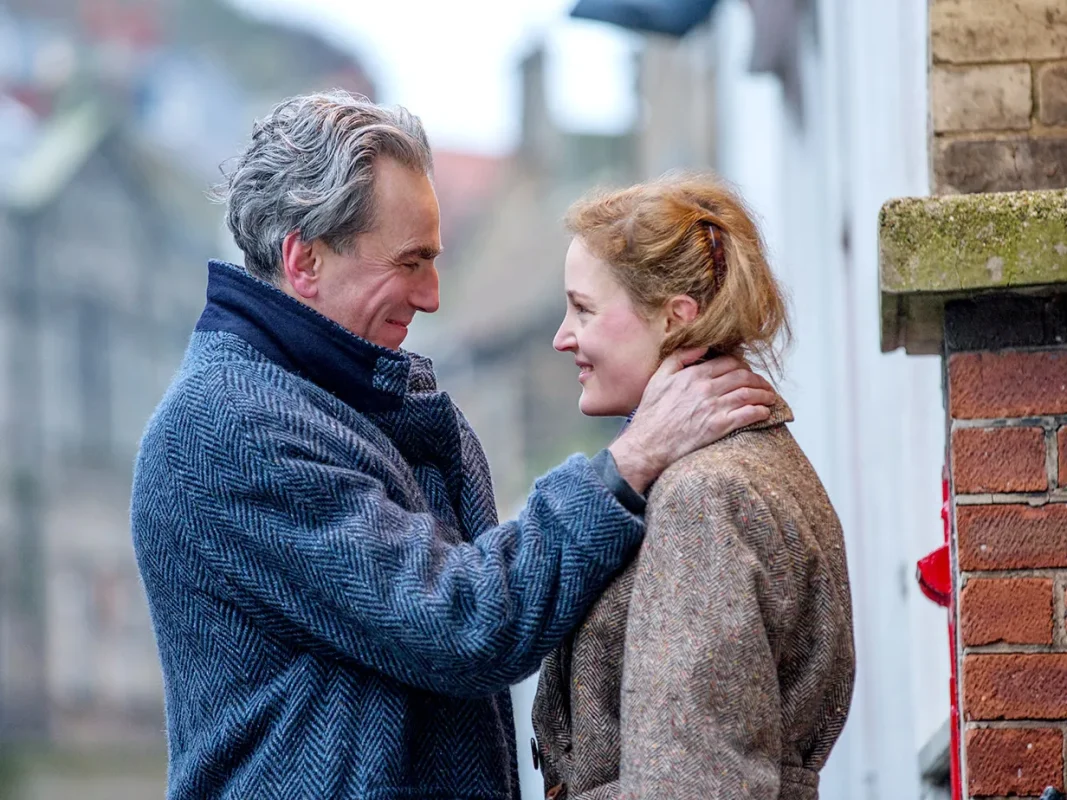
“Phantom Thread,” directed by Paul Thomas Anderson, is a meticulously composed study of control, obsession, and the peculiar intimacies that unfold within power-laden romantic relationships.
Set in 1950s post-war London, the film centres on Reynolds Woodcock (Daniel Day-Lewis), a renowned fashion designer in late middle age, whose highly ordered world is disrupted by Alma (Vicky Krieps), a much younger, seemingly unassuming waitress who becomes his muse, lover, and ultimately, equal adversary.
Woodcock, accustomed to emotional detachment and artistic perfectionism, expects Alma to conform to the passive role of muse. Yet what unfolds is a quiet inversion of power: Alma refuses to remain an object of male genius, and instead, rewrites the terms of the relationship. Their dynamic becomes an unsettling psychological pas de deux, where love is expressed through control, manipulation, and even bodily vulnerability.
Anderson’s direction is exquisite, with Jonny Greenwood’s haunting score and the film’s restrained aesthetic reinforcing its mood of cultivated tension. The age difference is not foregrounded, but it saturates the film’s dynamics, particularly in how authority, experience, and gender intersect in subtle, often surprising ways.
“Phantom Thread” ultimately dismantles the myth of the isolated male genius by showing how even the most fastidiously controlled world can be undone by love, not as sentiment, but as a strategy. In reframing the age-gap romance through mutual dependence and dark emotional reciprocity, Anderson offers one of the most enigmatic and psychologically rich portrayals of desire in contemporary cinema. What appears at first to be a story of seduction by an older man becomes something far more unexpected: a love story sharpened into a gothic fable of resistance, care, and power.
10. The Idea of You (2024)
Michael Showalter’s “The Idea of You,” adapted from Robinne Lee’s 2017 novel, proffers a glossy yet surprisingly earnest exploration of age-gap romance in the celebrity age. The film follows Solène (Anne Hathaway), a 40-year-old art gallery owner and divorced mother, who embarks on an unexpected relationship with Hayes Campbell (Nicholas Galitzine), a 24-year-old global pop star and member of a boy band beloved by her teenage daughter. What could easily veer into fantasy wish-fulfilment is instead handled with sincerity, aided by Hathaway’s grounded, emotionally intelligent performance and Galitzine’s nuanced vulnerability.
The age difference between Solène and Hayes is both the central conflict and the lens through which larger cultural anxieties are examined, gendered double standards, the commodification of youth, and the social scripts that police female desire beyond a certain age. Unlike many age-gap narratives that position the older partner as the dominant force, “The Idea of You” gives agency to both characters.
Their relationship unfolds in a world where fame amplifies scrutiny, and love must navigate public perception as much as personal growth. Stylistically, the film balances romantic fantasy with moments of introspective realism. Its commentary on how women’s romantic and sexual lives are treated as culturally disposable after a certain age adds depth to what might otherwise be dismissed as a pop romance. “The Idea of You” may not radically subvert the genre, but it refreshes it with empathy, charm, and a distinctly modern awareness.
For a lighter, more comedic take, Netflix’s “A Family Affair” (2024), starring Nicole Kidman and Zac Efron, fits the bill. While “A Family Affair” plays its age-gap romance for broad laughs and family-fueled chaos, “The Idea of You” offers a more grounded, emotionally layered take on a similar premise. Both films centre on romances between older women and younger men in the spotlight of public scrutiny, yet approach the trope from different tonal registers, one comedic, the other sincere and introspective.

